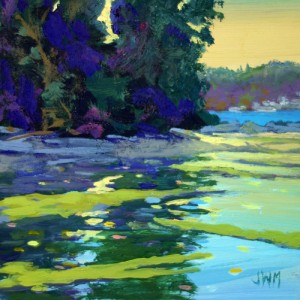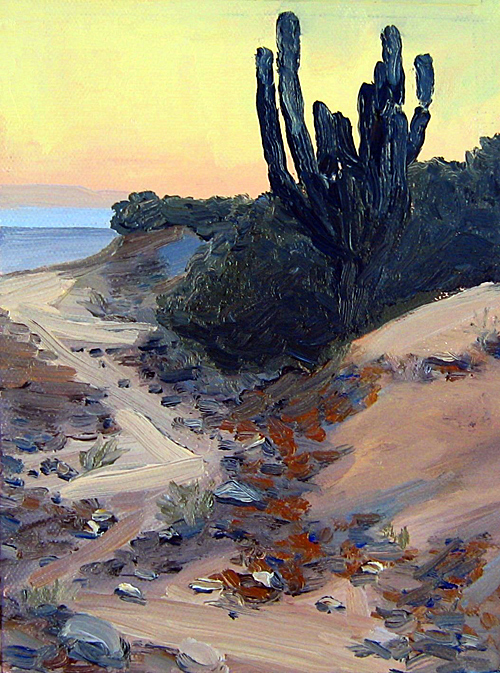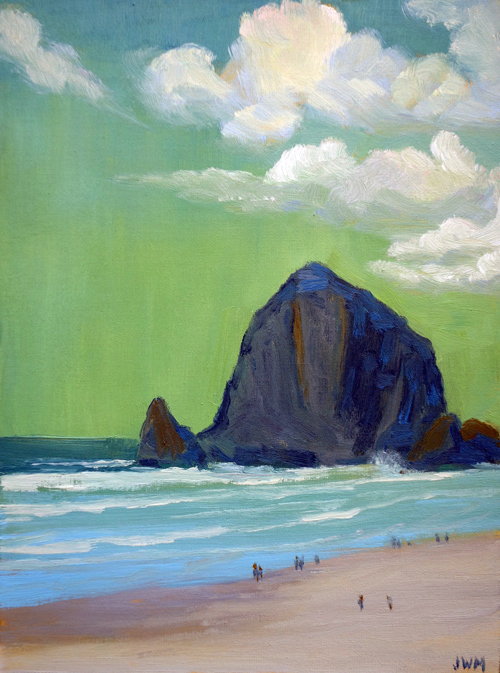Art, // January 24, 2015
Jolyn Wells-Moran – ARTIST
Interview with artist Jolyn Wells-Moran
1. Who are you and what do you do?
My name is Jolyn Wells-Moran and I’m a landscape oil painter who paints in a realistic style with an expressionist bent.
2. Why art?
I don’t think there was ever a real choice. Art and nature have always been in my soul and inextricably linked, and it had to come out in some way. I’ve eventually settled on oil painting within and of the the natural world.
3. What is your earliest memory of wanting to be an artist?
My earliest memories are at age three or four, not of wanting to be an artist, but of being an artist — drawing on paper on the floor. I drew and painted throughout childhood, and always thought of myself as an artist. When it came time to consider how I would make a livelihood, though, it never occurred to me to pursue art as a career. I had never met anyone who was a professional artist and didn’t like the idea of illustration as a career. I took as many art courses as possible in college, but my career focus was on social services.
4. What are your favorite subject(s) and media(s)?
I’ve always loved the natural world — nature’s designs, the light and shadows, the harmonized color, nature’s abstractions. I rarely like urban and suburban scenes, but enjoy placing figures in some of my landscapes and may someday further explore portraiture if there’s time. Right now, I’m overwhelmed with the multitude of choices within nature. I used to paint in watercolors and have used acrylics, pen and ink, and charcoal, but I’ve found that oils suit me best.
5. How do you work and approach your subject?
I tend to paint a la prima, en plein air (outdoors) most of the time. I work from plein air studies in the studio for larger pieces. I like the freshness in my painting and surprises that painting plein air provides, not to mention the energy I get from working in the fresh air air and beauty of nature. I usually draw two or three thumbnails, at least one a notan (black and white) and another, a four to six value study. I sometimes paint a thumbnail as a color study too. I then proceed as most of the best artists do; working on canvas or gesso board, tinting the surface, rubbing out the lightest areas, painting in the darkest areas, always striving to keep it simple until the point that that the painting may need a little detail and then, finally, the highlights.
6. What are your favorite art work(s), artist(s)?
Well, I’ll likely always love Monet, Bonnard and Pissarro, among others, but from living artists, I really adore many works by Eric Jacobsen, Eric Bowman, Kathryn Townsend, Fred Hope and Casey Klahn. Each of these artists clearly and uniquely expresses their own take on nature — each while leaning at least a bit toward abstraction, but only abstraction that’s well grounded in truth and solid drawing, compositional and painting skills.
7. What are the best responses you have had to your work?
I feel honored every time someone buys one of my paintings or likes my work with some recognition of what I’ve tried to convey. I would have to count among the best responses to my work lately: being named a finalist, of 7,200 entries, in the Artist’s Magazine’s 30th Annual Art Competition, 2014; receiving an Award for Outstanding Art from Light Space & Time Gallery; and being a “Top Honors” artist in Southwest Art Magazine, January, 2015 edition.
8. What do you like about your work?
The works I like best are from when I’ve been able to capture the essence of my reactions to a place and time within the natural world. Then, my heart sings! Of course, this doesn’t happen without the artistic fundamentals in place too — good composition, drawing, simplification of masses, a few honest values, attention to edges, harmonizing color and more.
9. What advice would you give to other artists?
If I may be so forward, I say to others to only to make sure that you learn the fundamentals thoroughly and well, and work, work, work every day! Don’t beat yourself up over any work gone wrong — your failures are a part of learning. Your own uniqueness will joyfully emerge in time from that strong foundation, so don’t waste time and self respect and the respect of others with shortcuts.
10. Where do you see yourself in 5-10 years?
I see my myself producing works that are even more consistently expressive of my perceptions of the natural world and beautiful painting. Maybe those are just goals, but I think it’s important that artists project goals onto a future screen of self expectation. I believe that that’s what makes for some level of satisfaction and integrity.
Links —
Website: http://jwellsmoran.com/
Facebook: https://www.facebook.com/JolynWellsMoranFineArt









